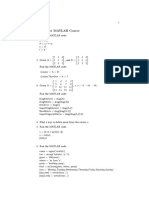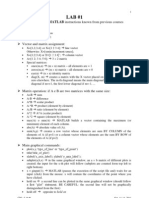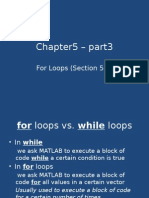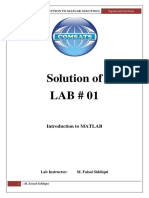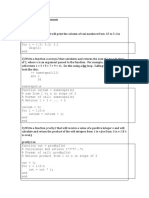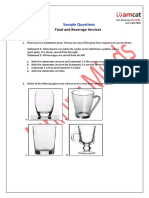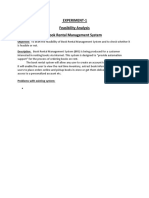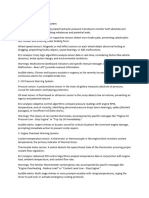0% found this document useful (0 votes)
360 views8 pagesChapter 5: Vectorized Code Exercises
This document contains 17 exercises related to vectorizing code in MATLAB. The exercises cover topics like:
1) Rewriting for/while loops using vectorized code with single statements
2) Using built-in functions like sum(), cumsum(), cumprod() to perform vector operations
3) Working with matrices and vectors to find max/min values, perform element-wise operations, and more.
4) Writing functions to operate on vectors and matrices in a vectorized manner.
Uploaded by
khushi maheshwariCopyright
© © All Rights Reserved
We take content rights seriously. If you suspect this is your content, claim it here.
Available Formats
Download as PDF, TXT or read online on Scribd
0% found this document useful (0 votes)
360 views8 pagesChapter 5: Vectorized Code Exercises
This document contains 17 exercises related to vectorizing code in MATLAB. The exercises cover topics like:
1) Rewriting for/while loops using vectorized code with single statements
2) Using built-in functions like sum(), cumsum(), cumprod() to perform vector operations
3) Working with matrices and vectors to find max/min values, perform element-wise operations, and more.
4) Writing functions to operate on vectors and matrices in a vectorized manner.
Uploaded by
khushi maheshwariCopyright
© © All Rights Reserved
We take content rights seriously. If you suspect this is your content, claim it here.
Available Formats
Download as PDF, TXT or read online on Scribd
/ 8











